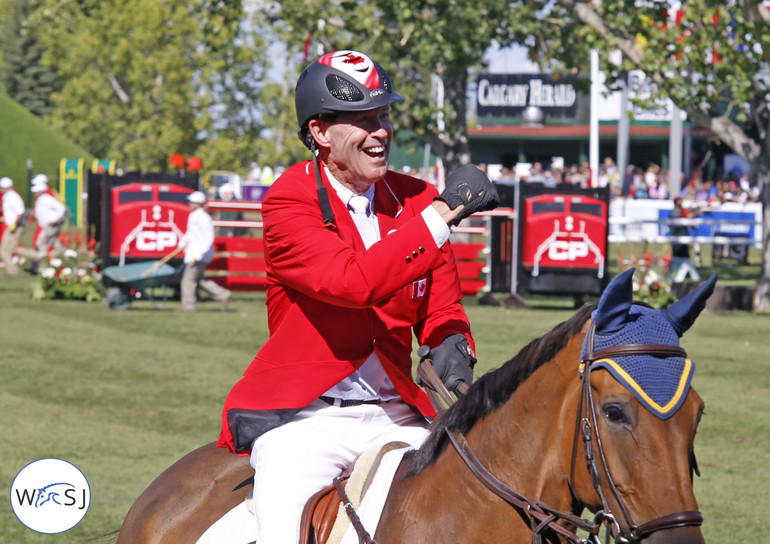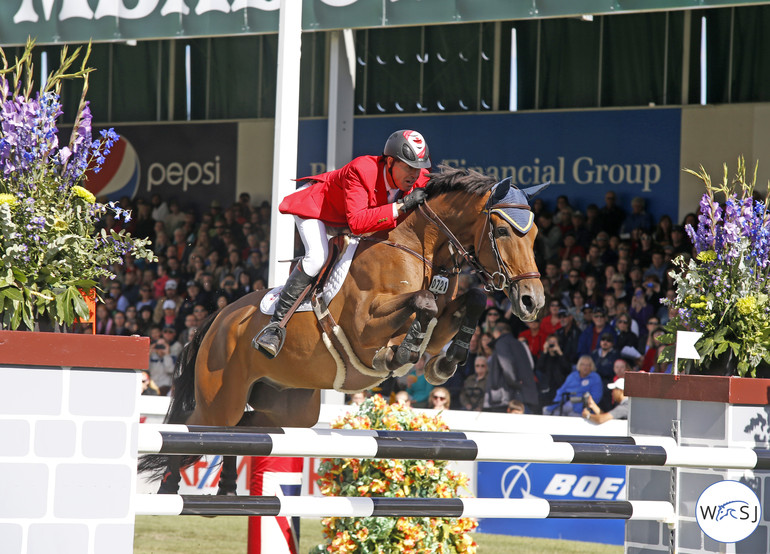By Ian Millar & Tim Worden
Ian Millar is one of the most successful riders of all time with a career spanning over five decades. The Canadian rider has been named to ten Olympic Games and is the twelve-time Canadian National Champion. He was part of the silver medal winning team at the 2008 Olympics, has won the World Cup Finals twice, has nine Pan American Games medals – including three gold medals and has won the Spruce Meadows Major Grand Prix three times. Ian has competed over 100 horses at the FEI level and has been an important part of training top riders such as Richard Spooner, Jill Henselwood, Mario Deslauriers, Jeff Campf as well as his children Jonathon and Amy.
Over his career, he has developed and refined a program that consistently produces top results in major competitions. As part of this program, Ian has identified ten principles that provide the structure for all training decision made when developing jumping horses.
1. The principle of providing a foundation
The horse must have a solid physical and mental foundation upon which you can continue to develop their abilities. I ensure my horses have the strength, quickness, flexibility, confidence, endurance and soundness to handle the level of training and competition I am pursuing. For example, if you are training a horse at the 1.45 m level it must have the base level of education, strength and balance needed to control its’ body throughout the course. If there is a deficit between the foundation of a horse’s body or mind and what you ask of it in training, you risk injuring the horse or damaging its’ confidence.
2. The principle of repetition
Consistency in your training program is important for two reasons:
1) Horses are creatures of habit. They excel when they have a reliable routine in their lives – this allows them to become more relaxed, which translates to improved sports performance. This includes having a regular daily routine, dependable staff, consistent rider cues, etc.
2) Horses, like humans, learn through repetition. In training, the goal is to expose a horse to a training stimulus often enough that the horse’s response and performance become predictable and seemingly automatic. “Perfect practice makes perfect.”
3. The principle of specialization
Show jumping at the highest levels is beautiful to watch – what these horses can do athletically is incredible. However, it is important to remember that these athletic feats are very specific, and only a handful of horses have the skills needed to compete at the 5* level. At the highest level, we need horses that can jump 14-17 1.60m+ jumps at 400 m/min. To meet these athletic demands, we need to ensure horses are trained through both specific exercises at home as well as exposed to sufficient practice in the ring.
4. The principle of individualization
I have had the privilege to ride hundreds of horses in my career, and I can say with 100% certainty that I am yet to sit on two horses that are the same. It is my job to understand each horse and the ‘why’ behind everything it does – this directs how I build my training program to meet their needs. This is why experience and knowledge for a rider are so important – the more you know the more likely you are to identify a horse’s idiosyncrasies quickly and adapt your program accordingly.
5. The principle of injury avoidance
Early in my career I identified the massive negative impact that injuries have on horses. Injuries halt progression, can ruin a horse’s confidence, often introduce other mental issues, and are a significant financial burden. I am constantly assessing each aspect of my program to ensure every effort is made to reduce the risk of injury. This includes monitoring horses during turnout, not working a horse intensely when tired, extensive physiotherapy and close consultation with veterinarians, farriers and therapists.
6. The principle of adaptability
The ability to adjust to unforeseen circumstances is critical. Just because you plan to jump school a horse on Thursday does not mean that you will go through with that jump school without considering what happened on Tuesday and Wednesday.
To be successful, you need to be able to listen to your horse and adapt your plan daily based on what it is telling you. If your horse feels a bit stiff don’t be afraid to abandon your plan for the day and do an easier workout or no training at all – better that than pushing the horse and causing an injury. Do not be married to the plan and refuse to diverge from it.
7. The principle of achievability
To maintain a horse’s confidence you need to ensure you are putting it in a position where a positive outcome is attainable. If you overface a horse, i.e. put it in a position where it likely does not have the skill or mindset to succeed, you greatly increase the risk of damaging its' confidence. Once confidence is gone, it is a long road to get it back. Thus, it is important to be realistic about your horse’s current skill level and to match your training and competition accordingly. Challenge but never overface.
8. The principle of teamwork
You need to build the best team possible around you, which includes your horse care staff, veterinarian, farrier, therapists, owners, sponsors and administrative staff. A complete team with open communication is needed to cover all areas and ensure nothing in the program is missing. Any oversights in your program increase the likelihood that a weakness exists that will limit your results.
9. The principle of systematicness
There are no shortcuts to achieving sustained success in show jumping. As a rider, you need to work using a structured and methodical progression to reach your ultimate goals. As stated in principle #1, show jumping training is the systematic building of skills and physical abilities to develop a horse capable of competing at the highest levels of the sport.
10. The principle of empathy
You need to be able to understand your horse’s thought process and to put yourself in its’ situation. Your ability to ‘sense’ the horse’s thoughts controls the entire training program. If you do not understand your horse then you cannot provide the proper cues during training, and you both will become frustrated and progression will halt.
No reproduction without permission
Photos © World of Showjumping/Jenny Abrahamsson












